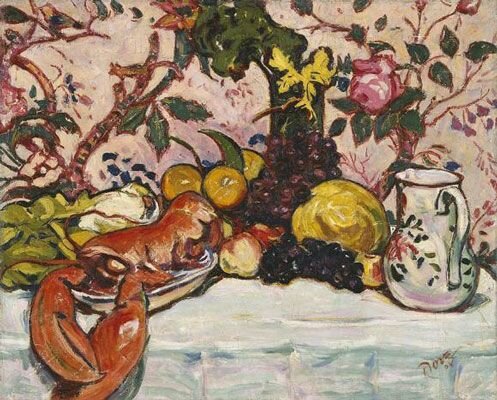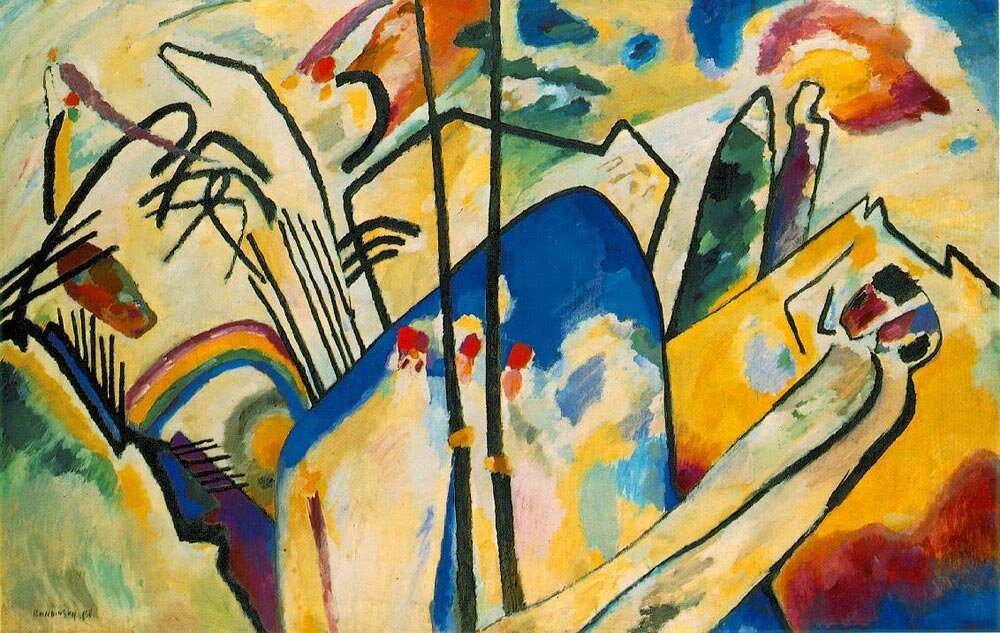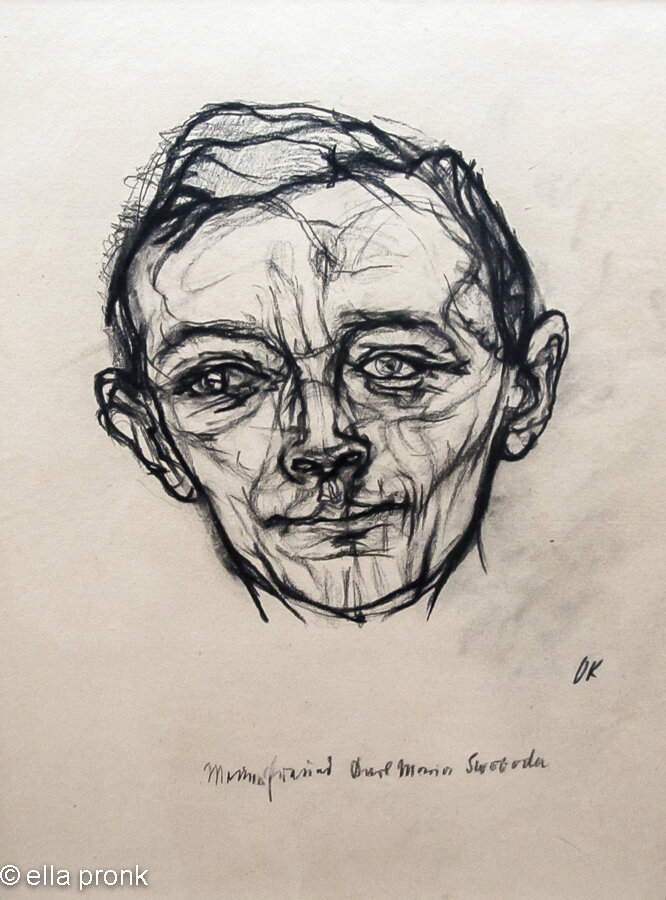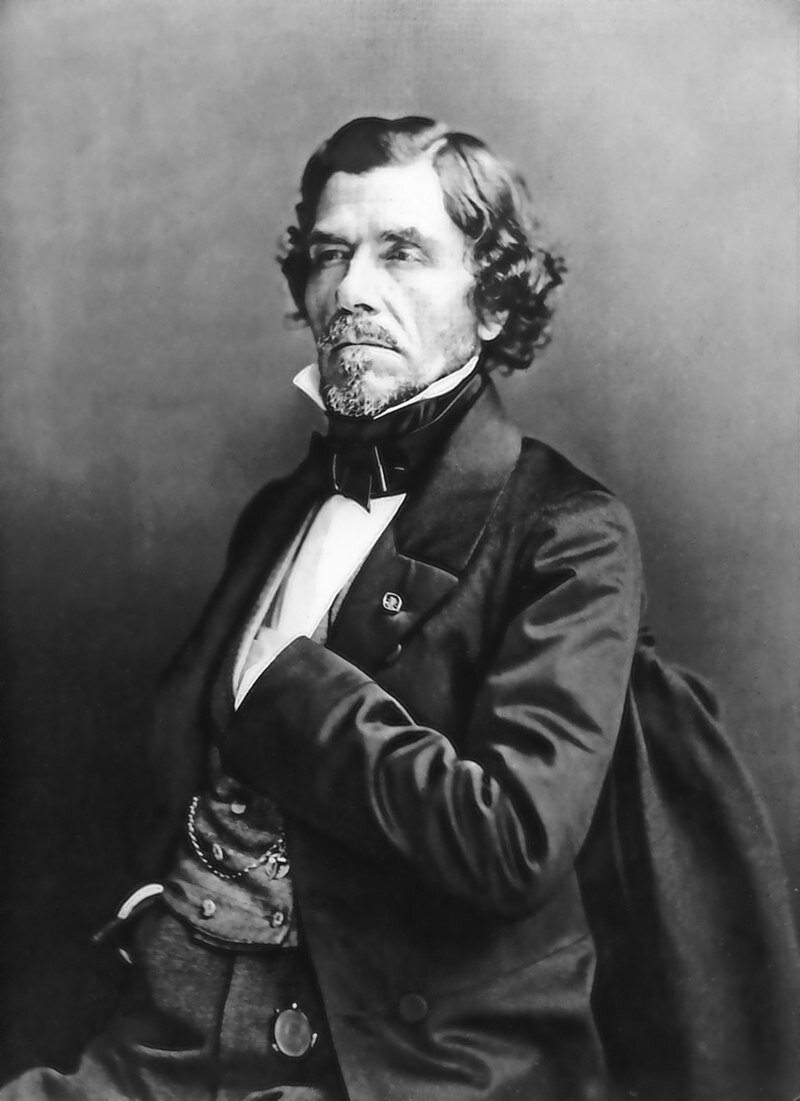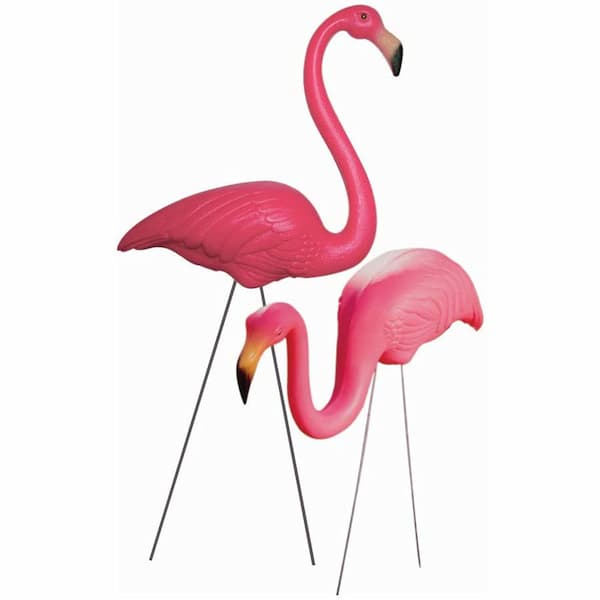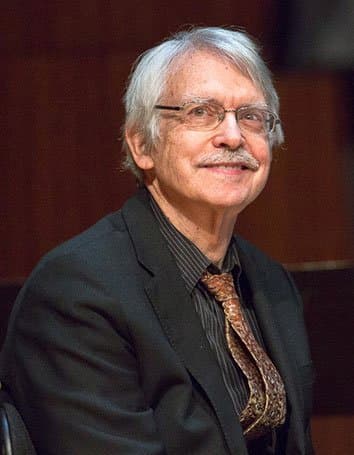
Hensel: Fanny Mendelssohn (before 1829)
Fanny met her future husband, Wilhelm Hensel, in 1821 when she was just 16. She was a member of one of the leading society families and he was an up-and-coming painter in Berlin. Along with his portraits, he had designed a number of tableaux vivants (living pictures) where living people portray a painted scene.
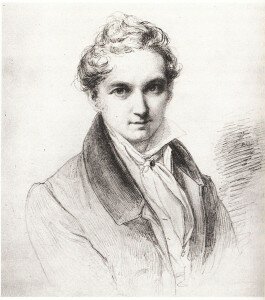
Hensel: Self-portrait (1829)
By 1822, Wilhelm was courting Fanny and she was secretly setting some of his poems to music. Her parents were concerned about Hensel’s age (he was 11 years older) and the fact that his sister was a Catholic mystic. As Lutherans who had converted from Judaism, the parents could only discourage a Catholic connection, particularly as Berlin’s heavily Lutheran society was also prejudiced against Catholics.

Sunday in the Park with George (Roundabout Theatre, New York, 2008)
Wilhelm returned in October 1828 and had to work to get back into the Mendelssohn family circle, held back by both his extended absence and his complete lack of musical ability. He had his own success in his first exhibition, held at the Royal Academy of Art in Berlin, which resulted in Friedrich Wilhelm III appointing him as court painter. The appointment opened the way for his marriage.
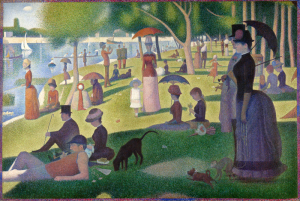
Seurat: Un dimanche après-midi à l’Île de la Grande Jatte
After their marriage, the composer and the painter set up house, with each having their own work room. Fanny continued to set Hensel’s poetry to music and dropped other poets from her repertoire. Their only child, Sebastian Ludwig Felix Hensel, named after Fanny’s three favourite composers, was born in 1830.
Despite her brother’s distance in England, they worked together, with some of her Lieder appearing under his name when he was being pressed by his publisher to give him material. Her song ‘Die Nonne,’ for example appeared as no. 12 in Felix Mendelssohn’s Op. 9 song collection. Her pieces also appear as no. 7 and 10 in that collection.
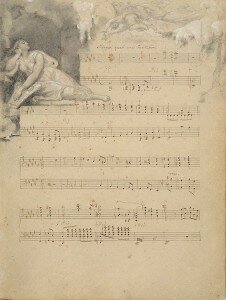
Hensel / Mendelssohn-Hensel: Das Jahr: January
In 1831, she started a Sunday music get-together, her Sonntagsmusiken, which became a popular invitation-only concert series – it is reported that up to 200 people would attend, including the Prussian nobles of Berlin, and performers would include people such as Clara Schumann and Franz Liszt, as well as Fanny herself.
Finally in 1839, she finally got to go to Italy. She and Wilhelm visited Milan, Venice, Florence, and Rome, where she benefitted not only from her brother’s reputation but also her own musical talents. The composers in Rome looked to her to tell them what they should know about German music and she was admired as she never had been before as both a pianist and a composer. After 6 months in Rome, the Hensels travelled on to Naples, before heading north to Milan and back home, arriving a year after their departure.
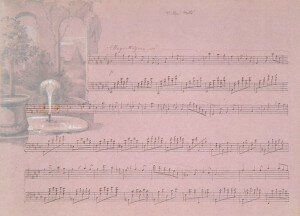
Hensel / Mendelssohn-Hensel: Reisealbum: Villa Mills
Another collection the couple worked on next, the Reisealbum, put their trip to Italy into words, music, and illustration.
Mendelssohn-Hensel: 4 Lieder, Op. 2: No. 3. Villa Mills: Allegretto grazioso (Daniela Dawn Fietzek, piano)
The music written in 1841 shows Fanny’s breadth of style, particularly when you compare the lyrical Villa Mills with the much fiercer ‘Der Fürst vom Berge,’ written to lyrics by Wilhelm.
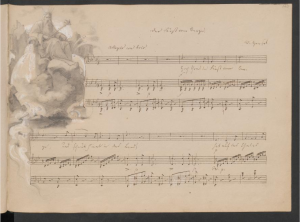
Hensel / Mendelssohn-Hensel: Reisealbum: Der Fürst vom Berge
The Hensels continued on in their life, Wilhelm painting and Fanny composing, although very little of her music was published in her lifetime under her name. The family took another trip to Italy in 1845, staying with friends in Florence before travelling down to Rome, where Wilhelm was already resident. Music of Fanny’s musical life revolved around her brother’s music productions, such as the 1845 performance of Felix’s Oedipus at Colonos in Berlin. It was at one of her Sonntagsmusiken (14 May 1847), when she was rehearsing one of Felix’s works, that she was felled by a stroke, dying that same evening. News of her death caused a nervous breakdown in her brother and he died a mere 5 months later, also from a stroke.
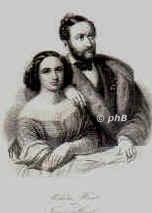
Ratti: Fanny and Wilhelm Hensel (ca 1850)
Mendelssohn-Hensel: 5 Lieder, Op. 10: No. 5. Bergeslust (Dorothea Craxton, soprano; Babette Dorn, piano)
Wilhelm and Fanny occupied overlapping artistic spheres, not separate ones. She set his poetry and he illustrated her works. Mid-nineteenth century society and marriage were dual obstacles to Fanny having her own career. Her brother’s lack of encouragement also held her back. Nonetheless, she continued to compose until to the end.

